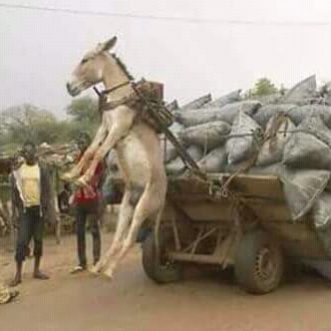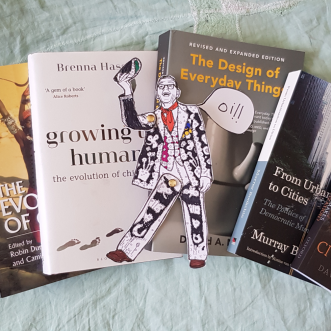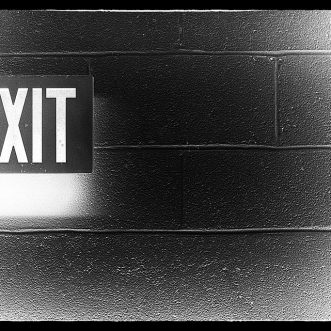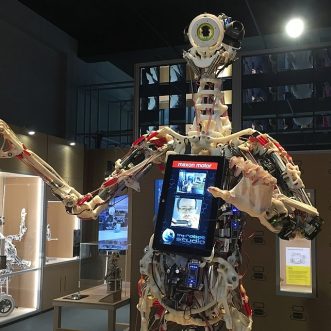
Category: Discipline makes Daring possible


Legacies
We all think we’re going to live forever.
We go through life making our dent in the universe without giving a thought to what might happen to it after we’ve gone. If we think of a legacy at all, we think of it as money or assets to be left to our children.
There are other ways.
Artists leave a body of work that can remind everyone that comes after of their unique dent. Writers or composers do even better. They leave behind the means to re-create their work, so their unique dent can actually get wider and deeper for hundreds of years after they’ve turned to dust.
And many of us start enterprises. Most of which will die when we do, even when they are successful.
Why? When with a little effort, we could leave the means to continually renew and expand our dent to reach everyone who needs it for generations to come?
That’s what I’d call a legacy.
And my mission is to help business owners like you leave yours – for generations to come.

Confusions
Stick insects confuse their predators on purpose. They pretend to be a twig. A predator already has a mental model of what a twig is and how it works, which doesn’t include being edible. So it leaves the insect ‘twig’ alone.
We humans confuse people all the time. Sometimes on purpose, most often by accident. We assume that our mental model of the thing we’re building will be obvious to everyone who buys it, uses it or operates it. Yet that is rarely the case.
Take a small business. For a shareholder or investor it’s a machine for generating returns. For founders it’s a way to make a dent in the universe or their route to a coveted lifestyle. For their accountant it’s a set of connected accounts. For an operations manager it’s a set of loosely related functions, one of which they probably consider to be the most important. For some employees it’s a means to enjoy life outside work. For others it’s a lifeline, and for others still a vocation. For a customer it’s a solution to a problem.
Conflicting mental models pull people in different directions and make the thing you’re building confusing, less effective and ultimately unusable.
The answer?
- Use a model that is simple, easy to communicate and effective in delivering what everyone wants.
- Design the thing you’re building around that model, so that the way it works clearly reflects the concept behind it.
- Share your model in your marketing materials, shareholder reports, filed accounts, operations manual, help guides and status reports, so that it becomes a joy to interact with, whatever your role.
If you’re a small business owner, you might like to use mine:

It works well, if you want to create a business that can last or that can grow.
Or both, if that’s what you want.

Conservation
When there’s a heatwave on, the best thing for me to do is to sit still and read. Or colour in.
The reason I have such a big library is that I can’t help following threads from one book to another. Sometimes I keep on picking up new threads, often I go back on myself and revisit old favourites.
Eventually they all get darned in together, to make something new and familiar, well-worn and stronger, decorated by repairs.
Like a Pearly King’s suit, or my lovely old linen sheet, too fine and lovely to throw away, so kept just for heatwaves.

By accident or design?
One day you will have to leave your business. Will that be by design or by accident?
If you feel strongly about what happens to it once you’re gone, leaving by design is by far the better option. And the best time to start is now.
After all, you never know what’s around the corner.

Are you building to sell or to last?
Are you building your business to sell or to last?
The answer makes a huge difference to what you do before you leave – even if in the end you sell it.
And if the answer’s ‘Neither‘?
Then your business dies with you.
There’s no right answer.
It just helps to be clear.

Keep it simple, stupid
I’m facing a really interesting challenge at the moment.
Over many years I’ve developed a methodology, notation and software for capturing a Customer Experience Score in a way that suits people rather than machines. My notation is very simple. There aren’t many rules, and even those are only casually enforced.
This is because it’s all about making it easy for ordinary mortals. Whether that’s a business owner wanting to capture their desired customer experience or one of their colleagues wanting to learn what’s needed to deliver that experience. My aim is to make the software easy to learn and easy to use, and above all flexible so that the people using it can start scrappy, and build up to whatever level of detail works for them.
My challenge now is that some of those humans want to generate something more formal from their Score, something that needs clear rules to produce an output.
It’s interesting because it’s showing me how fuzzy (and sometimes inconsistent) my logic is. This is fine for humans, because humans are perfectly capable of interpreting fuzziness, and in any case I want to leave plenty of room for interpretation. It’s not so fine for software.
One approach would be to make the tool more rigorous, more constrained, more precise. In other words, to make it more machine-like. But that would mean adding levels of detail that would soon become excruciating for any ordinary mortal.
No, my work is all about liberating humans to be human, so I have to find another way, and I think it’s this: If humans are good with fuzziness and nuance, and machines are not, let the machine ignore all that and concentrate on the essentials.
For stupid machines, the answer might just be to keep it simple.

Recognised by small boys everywhere.
I’m pretty sure you’ll recognise what type of plane this is.
“It’s a Spitfire!” I hear you yell.
Of course it is.
But not the one that R. J. Mitchell is famous for. The Spitfire picture here is a Mark XVI, a variant of an earlier variant, the Mark IX.
You see, Mitchell created the Spitfire Promise of Value – a fast, high-performing plane that is easy to fly.
After Mitchell’s premature death in 1937, his colleagues continued to improve and build on Mitchell’s original design, to produce better Spitfires, adapted to different tasks, eventually creating 24 different Marks. All still fast, high-performing and easy to fly, and each one clearly recognisable as a Spitfire to small boys everywhere, despite their differences.
That’s what happens when you decide to become a Disappearing Boss. You may disappear, but your vision won’t.
In fact it might just get bigger.

The war for talent
There’s a talent war going on.
Companies are spending a fortune searching for that perfect new recruit – you know, the one with 10 years experience of a 3-year old industry; who can bring fresh eyes to your business plus an intimate knowledge of how you do things; who will ‘go the extra mile’ for a bit less pay than the last person in that role, and none of the perks.
What if instead of looking for unicorns, you gave everyone in your business the responsibility and autonomy they crave, a Customer Experience Score to follow and a share of the profits they make?
You’d probably find there’s more than enough talent in your business already.
It’s just that you’re wasting it.

What do you do when everything is urgent?
You’re probably familiar with the decision-makig matrix from Stephen Covey’s ‘7 habits of highly effective people’:

Davidjcmorris, CC BY-SA 4.0 <https://creativecommons.org/licenses/by-sa/4.0>, via Wikimedia Commons
The problem is that this diagram doesn’t tell you what to do when everything is urgent, which is how things tend to be by the time we humans get round to dealing with them.
The answer is I think, to start dealing with all of them, focusing first on the things that will either have most impact, or will enable you to still be around to deal wth the other urgent things.
A story in today’s Science X Newsletter illustrates this perfectly.
Methane is 30 times more potent than CO2 as a greenhouse gas, but only hangs around in the atmosphere for about 10 years. So by reducing our methane emissions quickly (especially if we use captured methane to replace new fossil fuels along the way), we can have a big and rapid impact on global warming, while our strategies for dealing with CO2 are taking longer to have an effect.
Like so much else with the climate crisis, we already have solutions to hand, we just need to pick them up and use them.
What do you do when everything is urgent?
Take a deep breath.
Remind yourself that it’s not too late.
Then get started.
Discipline makes Daring possible.